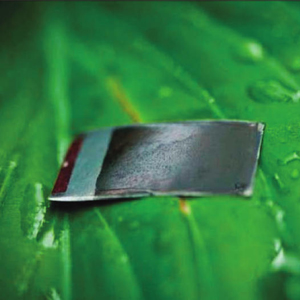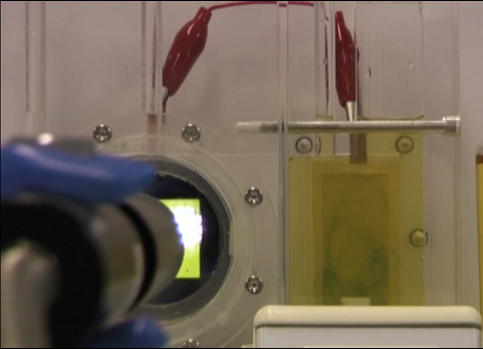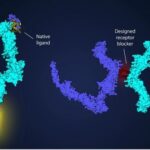Plants do it but not the birds and the bees….sorry Cole Porter.
And what do plants do?
They take in sunlight and CO2 through leaves and water through roots. They capture the carbon by breaking the CO2 molecular bonds. They also split water molecules releasing the hydrogen and oxygen as well as free electrons that produce energy. The plants use the products of these process to build and fuel themselves. And while doing this they expel oxygen as an unwanted byproduct. Plants do this using a cellular engine called a chloroplast. Each chloroplast when exposed to sunlight generates chlorophyll, a complex molecule consisting of carbon, hydrogen, magnesium, oxygen and nitrogen. Because plants do this we, the birds and the bees are the beneficiaries.
But if we could technologically do what plants do we could create a perfect solution to capturing carbon while generating an unlimited source of energy. Typically plants convert the energy from sunlight at an efficiency rate of less than 1%. Can we do better?

Artificial Photosynthesis in the Lab – Can We Transition to a Commercial Product?
In a 2010 article published in Popular Science an MIT scientist described an artificial photosynthesis technology using a silicon solar cell with a catalytic coating made from indium tin or fluorine tin oxide. The technology when immersed into water demonstrated an ability to split water molecules into hydrogen and oxygen. The yield from these laboratory experiments approached efficiencies of 2.5% better than an average plant. But the technology has yet to turn into a commercially feasible artificial leaf.
So the quest to move from the lab to the real world remains. That is until now if you can believe today’s announcement by Panasonic of the development of an artificial photosynthesis system as efficient as a real plant.
What the technology comprises of is a nitride semiconductor and a metal catalyst immersed in water. Direct sunlight or another focused light source causes CO2 reduction yielding formic acid (the chemical ants and many stinging insects produce) and releasing oxygen. The materials used in the process are inorganic and relatively inexpensive making conversion to a commercial product more feasible. The formic acid output from the process has an after market in the chemical industry.
Unlike the MIT research with its focus on producing unlimited energy, Panasonic sees the primary use of its artificial leaf technology at industrial sites to sequester carbon.

A commercially available artificial leaf will truly be a 21st century technology breakthrough with enormous implications for energy and the environment. It’s hard to imagine such an unlimited source of power so easily obtained. But that’s exactly what plants have been doing for hundreds of millions of years.
And for want of a good lyric, we are getting much closer to doing what plants do.









Seasonal emission and uptake of CO2 resulting from Northern Hemisphere vegetation cycles creates the prominent saw-tooth pattern in the Mauna Loa Lab CO2 data graphs. That’s proof positive that CO2 generated anywhere on Earth diffuses throughout the entire global atmosphere within just a few months. See CO2 curve: http://www.exo.net/~pauld/workshops/globalclimate/atmospherecarbondioxide.htm
The CO2 sequestration policy/technology implications are obvious. Any CO2 molecule is equally a CO2 molecule as any other. If you want to sequester a particular power plant’s CO2 emissions, you can do it at any place on Earth. Seems highly unlikely any synthetic photosynthetic scheme could ever compete with photosynthesis in natural tropical rain forests.
In a natural cycle of plant growth the main factor is not sunlight, but water. The world’s great deserts receive twice as much solar energy as tropical rainforests, but little vegetation grows in deserts. There is a reason highly prolific tropical jungles are called “rain” forests.
True, the CO2 naturally sequestered in tropical cellulose is only temporarily sequestered, but what mechanism would permanently sequester billions of tons of formic acid? In the natural environment formic acid would promptly breakdown and oxidize back to CO2. That’s why the whole world doesn’t stink of formic acid.
One could easily imagine a carbon offset scheme where the power-plant utility company in the US would set up CO2 sequestration farms rapidly growing vegetation in distant and sparsely populated tropical regions. We could more reliably and cheaply compress and bury tropical weeds in artificial peat bogs or in the deep oceans than we could store formic acid near power plants.
99% of all the biosphere’s CO2 is already sequestered in the cold ocean depths. Compressed 10-ton bales of tropical cellulose (specific gravity of 1.1) would sink into the ocean depths and remain there forever. Any more permanent sequestration scheme would require conversion into chemically stable carbonates, such as oyster shells and limestone.
I’m not saying inorganic leaves are without value, just that any value couldn’t be in sequestering power plant CO2. Plants are hugely “wasteful” of water; maybe inorganic leaves could play a major role in solar powered hermetically sealed space habitats, but it’s hard to see what a space habitat would do with thousands of tons of formic acid.
The artificial leaf as a technology panacea has yielded many false starts. The Sun Catalytix project, as reported in an article published May 31, 2012 in “Nature,” has proven more costly than originally anticipated. Apparently the photovoltaic infrastructure costs make the hydrogen yield unprofitable. See the article at: http://www.nature.com/news/artificial-leaf-faces-economic-hurdle-1.10703?WT.ec_id=NEWS-20120529.
The point you raise about using an artificial leaf technology to sequester carbon with formic acid being the principal byproduct and its potential problems, is interesting. Traditionally we manufacture formic acid from CO. Formic acid has many industrial applications – making leather and textiles, as a coagulant in manufacturing rubber, a preservative in livestock and poultry feeds, and an ingredient in the manufacturing of products like toilet bowl cleaners or scale removers. In fact, BASF, announced in May 2012 that they were building a new formic acid production line in Geismar, Louisiana to produce 50,000 tons of the stuff annually. Currently BASF produces 255,000 tons of formic acid to meet industry demand. See the BASF announcement at http://www.basf.com/group/pressrelease/P-12-250.